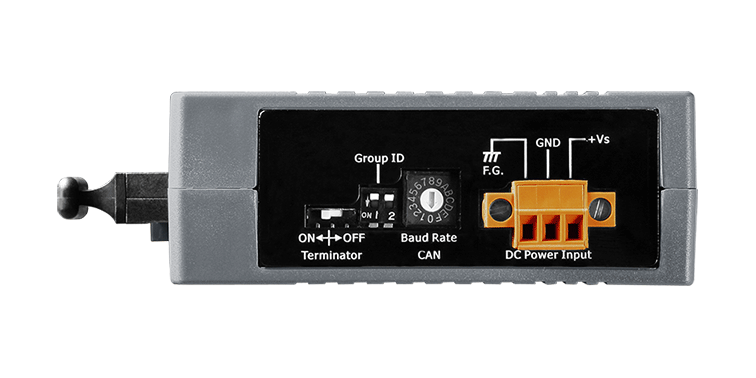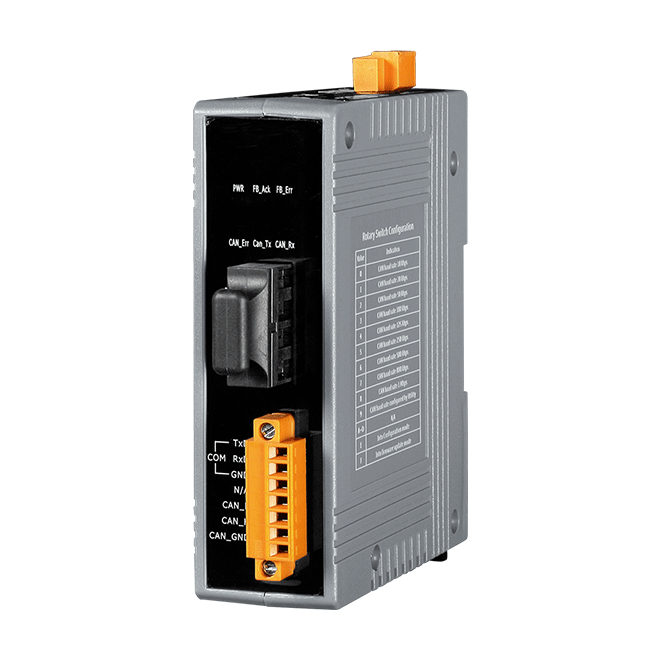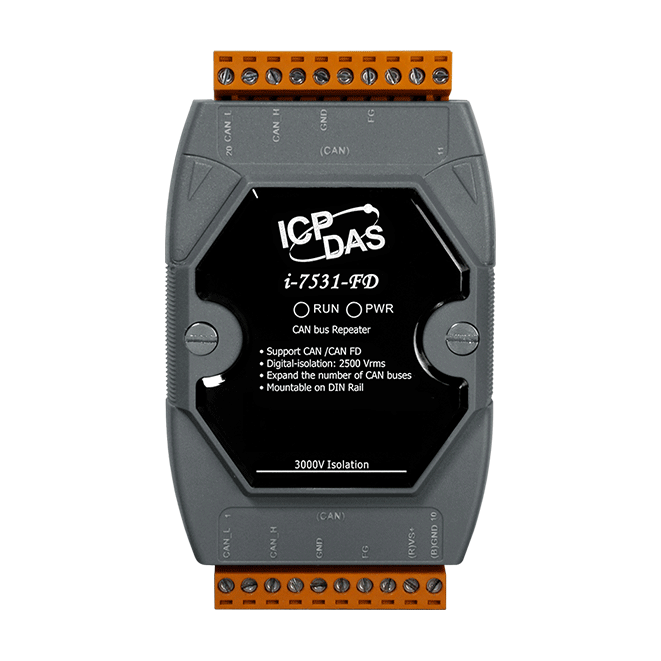CAN To Fiber Converter
Product Details:
- Product Type Can Bus to Fiber Converter
- Storage Temperature -30 ~ +80 C Celsius (oC)
- Network Connection Methods Wired
- Dimension (L*W*H) 33 x 126 x 101 (W x L x H) Millimeter (mm)
- Weight 450
- Power Supply +10 VDC ~ +30 VDC
- Material Plastic
- Click to View more
CAN To Fiber Converter Price And Quantity
- 10 Piece
- 35000.00 INR/Piece
CAN To Fiber Converter Product Specifications
- Industrial
- Plastic
- 33 x 126 x 101 (W x L x H) Millimeter (mm)
- +10 VDC ~ +30 VDC
- Gray
- Wired
- 450
- -30 ~ +80 C Celsius (oC)
- Can Bus to Fiber Converter
CAN To Fiber Converter Trade Information
- Cheque
- 1000 Piece Per Month
- 3 Days
- Device
- All India
- CE/FCC/ROHS
Product Description
Features
- Fiber Type: SC ; Single mode ; 100 Base-FX
- Maximum transmission distance up to 30 km at any CAN baud rate
- NXP TJA1042 CAN transceiver
- 2500 Vrms isolation on the CAN side
- Supports both CAN 2.0A and CAN 2.0B
- Fully compatible with the ISO 11898-2 standard
- Rotary switch for CAN baud rate configuration
- Build-in switch for 120 ï terminal resistor
- Removable terminal block, Mount easily on DIN-Rail
- Allows user-defined CAN baud rate
- Fiber broken line detection
- Utility tool for CAN message filter configuration
- The CAN port with the same Group ID can communicate with each other
Introduction
The I-2533CS is a local CAN bridge used to establish a connection between two CAN bus system via single mode fiber optic transmission medium. In order to solve the problem between CAN and fiber transmission medium, the I-2533CS is specially designed for converting the electrical CAN bus signal to fiber optic cables. I-2533CS has three more important features. First, the transmission distance limitation of the CAN bus system will not affected due to the different CAN baud rate. It means that the total CAN bus working distance can be extended. Second, the bus error on one CAN network will not affect the operation of another CAN network. Finally, the two CAN network can communication with each other by using different CAN baud rate for highly flexibility.
| LED Indicators | |
|---|---|
| Status | 1 x Power 3 x CAN status 2 x Fiber status |
| COM Ports | |
|---|---|
| Ports | 1 x RS-232 (Utility Port) |
| Fiber | |
|---|---|
| Ports | Single-Mode; SC Duplex connector x 1; 100 Base-FX |
| Fiber Cable | 8.3/125, 8.7/125, 9/125 or 10/125 m |
| Wavelength | 1310 nm |
| TX Output | -15 dBmMin. , -8 dBm Max. |
| RX Sensitivity | -34 dBm Max. |
| RX Overload | -5 dBm Max. |
| Budget | 19 dBm |
| Propagation Delay | 190 us (*Note1) |
| Distance Between Stations | 30 km (9/125 m recommended) |
| CAN | |
|---|---|
| Ports | 1 |
| Baud Rate | 10 k 1 M bps |
| Isolation | 500 Vrms on the CAN side |
| Terminal Resistor | Switch for 120ï terminal resistor |
| Specification | ISO 11898-2, CAN 2.0A and CAN 2.0B |
| Filter | Yes |
| Power | |
|---|---|
| Input Range | +10 VDC +30 VDC |
| Consumption | 3 W |
| Mechanical | |
|---|---|
| Casing | Plastic |
| Dimensions (mm) | 33 x 126 x 101 (W x L x H) |
| Installation | DIN-Rail |
| Environment | |
|---|---|
| Operating Temperature | -25 +75 C |
| Storage Temperature | -30 +80 C |
| Humidity | 10 90% RH, Non-condensing |
Specification Memo
Note1: The propagation delay depends on the CAN Bus baud rate and the CAN message format. This value has been tested using a CAN baud rate of 1 Mbps, the CAN ID 0x12345678 and 8 bytes of data with a value of 0xFF.

Price:
- 50
- 100
- 200
- 250
- 500
- 1000+
Other Products in 'CAN Modules' category
 |
NIMBUS TECHNOLOGIES
All Rights Reserved.(Terms of Use) Developed and Managed by Infocom Network Private Limited. |


 English
English Spanish
Spanish French
French German
German Italian
Italian Chinese (Simplified)
Chinese (Simplified) Japanese
Japanese Korean
Korean Arabic
Arabic Portuguese
Portuguese









